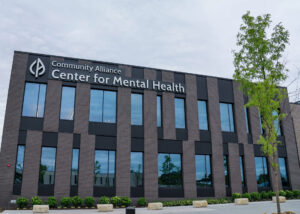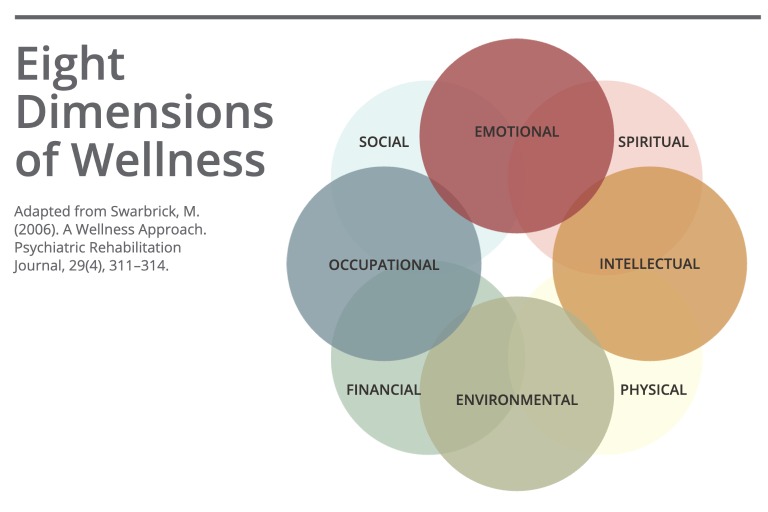How to build healthy habits in support of holistic wellness

Stacy Ring knows that improving and supporting mental health — and overall wellness — isn’t a simple solution. As a manager of Behavioral Health Education and Training at Community Alliance, she trains more than 400 students each year in community-based behavioral health. Stacy also leads classes for Community Alliance clients and other groups, guided by the time-tested philosophy: an ounce of prevention is worth a pound of care.
The best thing we can do for our mental health is to start healthy habits as early in life as possible. As adults, that means beginning to incorporate those habits into our daily lives. As parents, that means raising children with healthy habits, lifestyle tools and practices to protect against the development of a mental health condition or to manage it more successfully.
“Many of these recommendations apply to children because we model behavior for them,” Stacy said. “These resources transfer to people of any age, so you can focus on wellness before you have to focus on illness. And if you’re struggling with illness, you can use these to work toward wellness.”
The Eight Dimensions of Wellness
The Substance Abuse and Mental Health Services Administration (SAMHSA) has created a resource that features the Eight Dimensions of Wellness. These interconnected dimensions build the framework for wellness.
Mental health therapists at Community Alliance help with emotional wellbeing and social relationships, but our support doesn’t stop there — we also engage clients in all these dimensions of wellness to help them identify goals and work toward achieving them.

Physical wellness
Improving physical wellness involves nutrition, physical activity, sleep, drug use management, medication safety and preventative medicine. Ultimately, physical wellness means choosing things that make our body feel good and cutting back the things that bring us down. Consider:
- Checking out local food co-ops, farmers markets or community gardens for healthy food.
- Visiting local gyms, YMCAs, fitness clubs or neighborhood pools.
- Establishing healthy sleep habits and managing your routine to allow for needed rest.
- View page 7 of SAMSHA’s Creating a Healthier Life guide for further suggestions.
To support physical wellness, our team meets people where they are in the community to provide guidance and support their goals, like deciding which gym is the right fit for their needs. When our Center for Mental Health opens in the spring of 2024, it will feature a tranquil reflection room as well as a fitness area for people to practice physical wellness skills.
Intellectual wellness
The intellectual wellness dimension involves many components, like personal interests, education, mental exercises and conversations that keep our brains active and our intellect expanding. In a broad sense, this dimension can involve looking at different perspectives of an issue and taking them into consideration. Consider:
- Finding a community group or organization where you could teach a workshop or lead a discussion.
- Seeing what kind of skills training is available at the public library, local congregations, local colleges or other community organizations.
- Subscribing to local news sources.
- View page 9 of SAMSHA’s Creating a Healthier Life guide for further suggestions.
To support intellectual wellness, we work to help our clients stay connected to information that is important to them, including exercising their voting rights and understanding political issues that affect them; supporting lifelong learning through book clubs; introducing new hobbies and leisure activities; exploring the community on group outings; designing and publishing a monthly newsletter featuring submissions from program participants; and teaching critical thinking skills.
Financial wellness
There are many definitions of what constitutes being financially well, but overall, the financial wellness dimension involves things such as income, debt and savings, as well as a person’s understanding of financial processes and resources. Consider:
- Finding out if your bank offers tools to keep track of money.
- Exploring the public library for affordable financial planning resources.
- Searching online or in the classifieds for reputable credit counseling organizations that can help pay down debt.
- View page 11 of SAMSHA’s Creating a Healthier Life guide for further suggestions.
To support financial wellness, we offer a variety of financial-related services to our clients.
We use the SOAR model to help people without income apply for disability benefits, build financial stability and gain money management skills. A Community Alliance benefits specialist can help determine whether someone may qualify for Social Security benefits and the SOAR program.
Our Rentwise class teaches participants positive skills for independent living, like how to understand and follow a lease agreement.
We also work one-on-one with clients to strengthen their budgeting skills and to help them apply for income supports, including SNAP benefits and energy assistance. We help them explore insurance benefits and other community resources that can help stretch their budget to provide the best standard of living possible for recovery.
Environmental wellness
The environmental wellness dimension involves feeling safe and secure, including accessing clean air, food and water; preserving areas in which we live, work and learn; occupying pleasant, stimulating environments; and promoting learning, contemplation and relaxation in natural places and spaces. Consider:
- Looking for cleanup volunteer efforts, such as collecting trash around roads or parks.
- Figuring out what outdoor activities make you feel good, like walking, reading on a patio or playing sports.
- Making a schedule to clean up your home or living space.
- View page 13 of SAMSHA’s Creating a Healthier Life guide for further suggestions.
To support environmental wellness, we provide safe, well-maintained and inviting spaces for all services, and we educate clients about the impact of their environments on their recovery and wellbeing. We engage clients in keeping our spaces clean and organized while educating them about the impact of one’s environment on their mental health. We also encourage outdoor activities and engagement in the natural environment through walking groups, outings to parks and our annual agency picnic.
Spiritual wellness
The spiritual wellness dimension is a broad concept that represents one’s personal beliefs and values and involves having meaning, purpose and a sense of balance and peace. Consider:
- Learning about different organizations or groups in your community and deciding which ones are the best fit for you.
- Finding a peaceful location to frequently reflect or meditate.
- Sharing your beliefs, values and principles with others, as appropriate, as a means of deepening relationships and expanding your worldview.
- View page 15 of SAMSHA’s Creating a Healthier Life guide for further suggestions.
To support spiritual wellness, we encourage clients to explore the role of spirituality in recovery through psychoeducational groups in our Day Rehabilitation programs. We also work individually with clients to assess their spiritual needs and interests and to facilitate their participation in activities that promote spiritual beliefs in their daily lives.
Social wellness
The social wellness dimension involves building or maintaining healthy relationships with friends, family and the community and having an interest in and concern for the needs of others and humankind. Consider:
- Looking online or in the local paper for groups that share your interests.
- Keeping track when a friend or family member is due for a visit.
- Organizing a calendar of events to connect, or reconnect, to friends, like a public concert or a class reunion.
- View page 17 of SAMSHA’s Creating a Healthier Life guide for further suggestions.
To promote social wellness, we encourage and facilitate the development of healthy social supports for our clients across all of our programs. We help each individual identify healthy and safe people in their lives, build and strengthen relationships and find ways to engage in their communities to build supportive connections with others.
Occupational wellness
The occupational wellness dimension involves participating in activities that provide meaning and purpose and reflect personal values, interests and beliefs, including employment. Consider:
- Reflecting on the state of your career and life and pursuing jobs that will work well within that framework.
- Taking the time to reflect on what you enjoy most and researching careers/employment in that area.
- Keeping a calendar to schedule time for activities you enjoy.
- View page 19 of SAMSHA’s Creating a Healthier Life guide for further suggestions.
To support occupational wellness, our employment services create an individualized plan to help clients obtain and sustain a job that makes them feel confident and proud. We work with employers across the metro area and beyond and can help clients develop resumes, complete applications and prepare for interviews.
Emotional wellness
The emotional wellness dimension involves the ability to express feelings, adjust to emotional challenges, cope with everyday stressors and enjoy life. Consider:
- Using a journal to record feelings and thoughts.
- Discovering what you like to do best and doing it often.
- Trying out different coping exercises or strategies when not in a stressful situation. When challenges arise, you will be better prepared to deal with them.
- View page 21 of SAMSHA’s Creating a Healthier Life guide for further suggestions.




